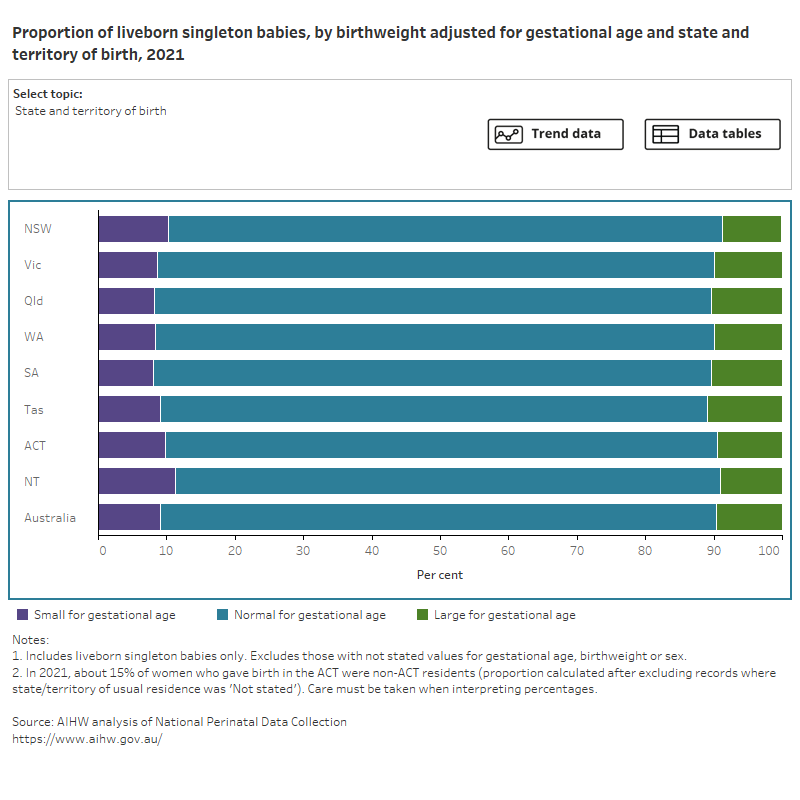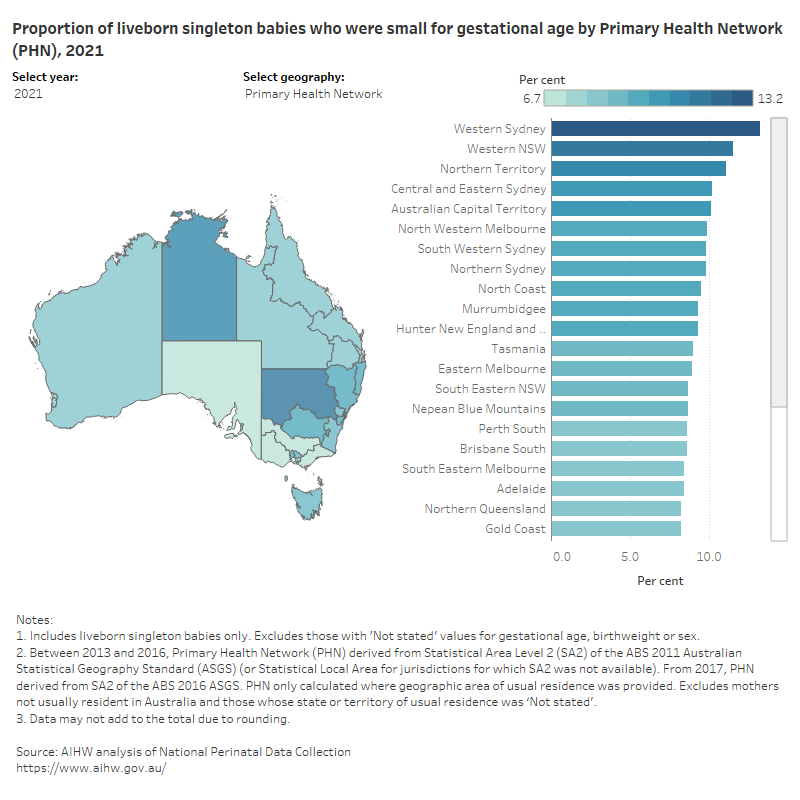Birthweight adjusted for gestational age
A baby may be small due to being born early (pre-term) or be small for gestational age, which indicates a possible growth restriction within the uterus. Poor fetal growth is associated with increased risk of stillbirth and with fetal distress during labour, and may make babies more likely to develop long-term health conditions later in life.
Adjusting birthweight for gestational age allows for differences in a baby’s growth status and maturity to be considered when examining their health at birth.
Babies are defined as being small for gestational age if their birthweight is below the 10th percentile for their gestational age and sex, and babies are defined as large for gestational age if their birthweight is above the 90th percentile for their gestational age and sex, as determined by national percentiles.
Data on birthweight adjusted for gestational age is limited to liveborn singleton babies.
Figure 1 presents data on the birthweight adjusted for gestational age of liveborn singleton babies, by selected maternal and baby characteristics, for 2021. Select the trend button to see how data has changed over a 9-year period.
Figure 1: Proportion of liveborn singleton babies, by birthweight adjusted for gestational age and selected topic
Bar chart shows birthweight adjusted for gestational age by selected topics and a line graph shows topic trends between 2013 and 2021.

Babies were more likely to be small for gestational age if they were:
- born to mothers who live in Very remote areas (11%)
- born to underweight mothers (19%)
- born to teenage mothers (aged under 20) (15%)
- born to mothers who smoked (16%)
- born to mothers who lived in the lowest socioeconomic areas (10%).
Figure 2 presents the number and proportion of liveborn singleton babies who were small for gestational age, by PHN area and SA3, in 2021.
Figure 2: Proportion of liveborn singleton babies who were small for gestational age, by selected geography
Map shows babies that were small for gestational age by selected geographies and years,

For related information see National Core Maternity Indicator Small babies among births at or after 40 weeks of gestation.
For more information on Australian birthweight percentiles for liveborn singleton babies see National Perinatal Data Collection annual update data table 6.1.
For more information on liveborn babies who were small for gestational age by Primary Health Network area and Statistical Area Level 3 see National Perinatal Data Collection annual update data tables 5.6 and 5.12, respectively.


